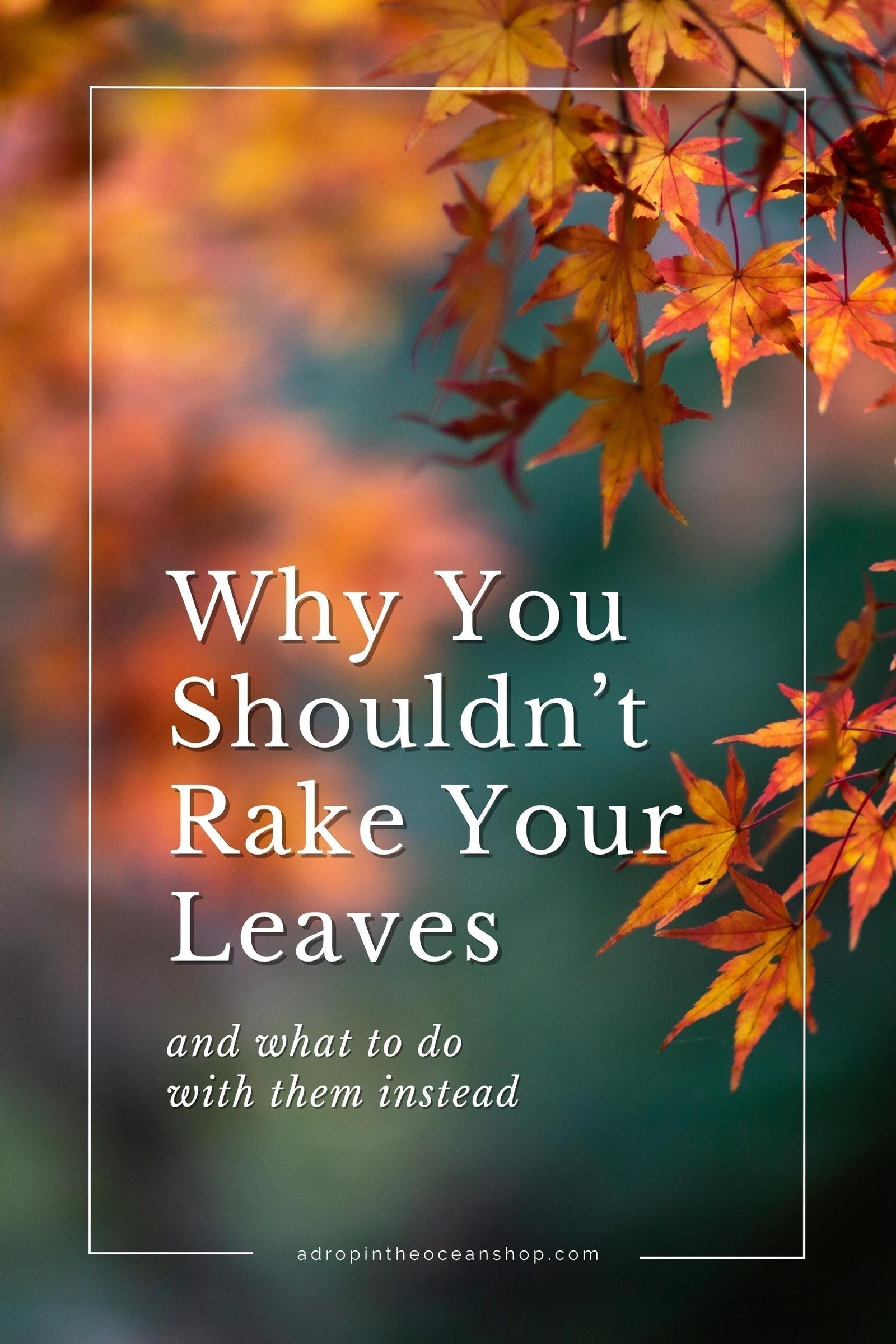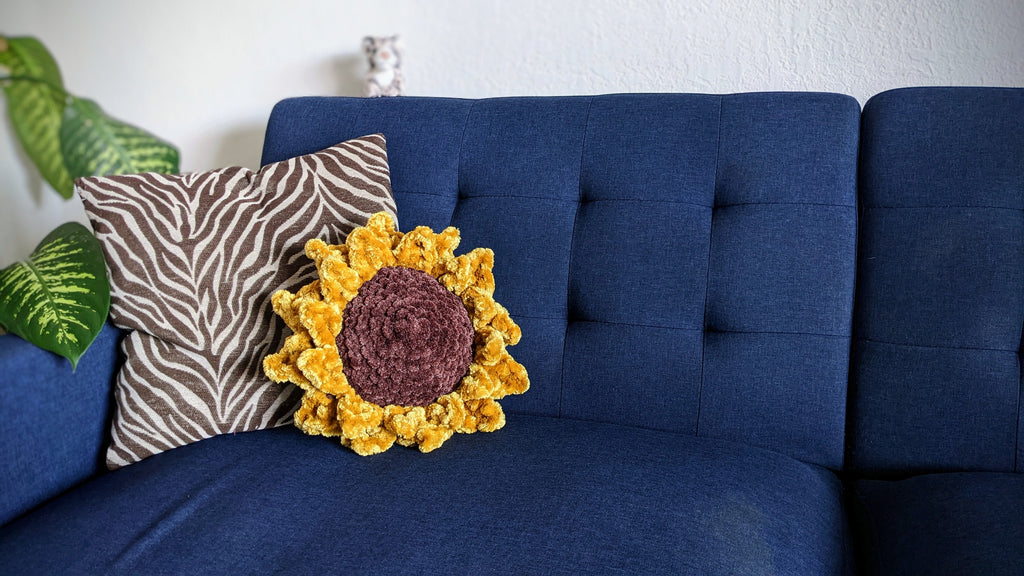Why You Shouldn't Rake Your Leaves This Fall

This post first appeared in our weekly Make Waves Mondays email series on November 14, 2022 and was updated and re-shared again on September 22, 2025.
Hey friend! Before we jump into this week’s blog, I just have to ask...
HOW STINKIN’ CUTE is this sunflower pillow?? 😍😍
My friend Mallory over at Pip Stitch Co. is SO incredibly talented with a crochet hook and I just HAD to get my hands on this pillow. It’s soooo soft and looks absolutely adorable on my couch. If you’re looking for a beautiful, nature-inspired, handmade gift for your loved ones this year, give Pip Stitch Co. a peek! One of these days I’ll be adding a mushroom and succulent pillow to the couch lineup, too 🍄

Now, let’s get into today’s wave-making!
If you’ve looked out your window recently and thought, “Man…the leaves really seem to be changing early this year…”, you’re not alone.
And you’re not wrong, either.
And, yes, it’s because of climate change.
Weather patterns are changing, and once-every-10-year weather events are happening once every couple of years.
Our trees are stressed out. And just like we might experience some hair loss after a stressful period of life, our trees are responding the same way.
So if you ask me, now more than ever, we need to be extra mindful of how we manage the dropped leaves, so we can actually use them to the benefit of the trees and their natural environments.
So this year, as the leaves start to accumulate across your lawn, while you may be tempted to rake them all up into piles, toss them in some bags, and leave them on the curb for trash pickup…let’s maybe not, okay?
So what should you do with them instead?
Well friend, let’s dive in 👇
Why shouldn’t I rake my leaves?
Every single year, 8 million tons of leaves are sent straight to landfill. Every year. That’s so much organic matter sitting in our landfills!
And since landfills are intentionally designed to be waste storage containers — not giant compost piles — the lack of air and water causes organic material to break down increeeeeeedibly slowly.
Like, basically not at all.
And when they do break down, they break down anaerobically, which means they end up emitting methane into the atmosphere — which is up to 80 times more potent of a greenhouse gas than carbon dioxide.
Basically, it’s all very no bueno.
But not only are leaves in landfills bad, leaves on your lawn are actually good.
Fallen leaves have tons of nutrients for your lawn — including nitrogen, phosphorus, and potassium. By letting the leaves decompose back into your lawn and the soil beneath, you’re boosting those nutrients and the overall health of your lawn.
Plus, the fallen leaf layer can create a healthy habitat for caterpillars, worms, spiders, and other small creatures — including toads and small mammals. While sometimes we may categorize these things as the “creepy crawlies,” they all play such crucial roles in maintaining the ecosystems around us.
(If you’re in a region where you used to enjoy the dark summer nights watching fireflies dance, and have since been missing those little dancing lights — part of the reason they’re so scarce these days is because of things like perfectly-manicured lawns and lack of leaf litter!)
It’s time we shift our thinking from lawns as perfectly-manicured green squares, to living, breathing, ecosystems benefiting our environment.

Photo by Andy Holmes via Unsplash
What should I do with my leaves instead of raking them?
Now, friend, you know I’m not just gonna leave you hanging there. Here are some ways to make use of those fallen leaves that don’t involve the local landfill.
-
Mulch the leaves. Use your lawn mower to shred the fallen leaves in your yard, then rake them evenly across the yard so you don’t end up with a thick layer of leaves anywhere. This way you’ll ensure that sunlight will still get to the grass underneath and the moisture can maintain its proper balance.
-
Feed your trees. Rake up your extra leaves and pile them around the base of your trees and shrubs — about 3- to 6-inches deep. The leaf layer will protect moisture levels and regulate the soil temperature.
I mean, think about when you’re hiking in the forest. There are leaves everywhere and no one is raking them up. Nature has a perfectly balanced system that we only need to emulate in our own yards 🍂 -
Pile the leaves into a garden bed. You don’t need to worry about shredding them here. Just add them to your garden bed to naturally decompose before the next planting season.
-
Compost any extra leaves! If you’ve done all the other things here but still have a ton of leaves left over, compost the rest. Basically, do whatever you can to keep them out of a landfill.
-
❌ Don’t blow them into the street. Excess leaves can cause drainage problems in sewers and end up in waterways, messing with the nutrient levels there and wreaking all sorts of havoc on those ecosystems.
Basically, as one NPR piece put it, the only downside to using your leaves in these ways?
Not having enough to rake into a pile for your kids to jump in.
So get out and play first, then pull out the lawn mower when the kids are back inside drinking apple cider 🍎🍂
And with that, I will leave you to the rest of your day. I hope you have an awesome week, friend, and I’ll “see” you again next week 💙
Related:
Closed-Loop Landscaping: Have Your Yard and Eat It Too with Foodscaping
What is the Lights Out for migratory birds program + how does it benefit humans, too?









Leave a comment